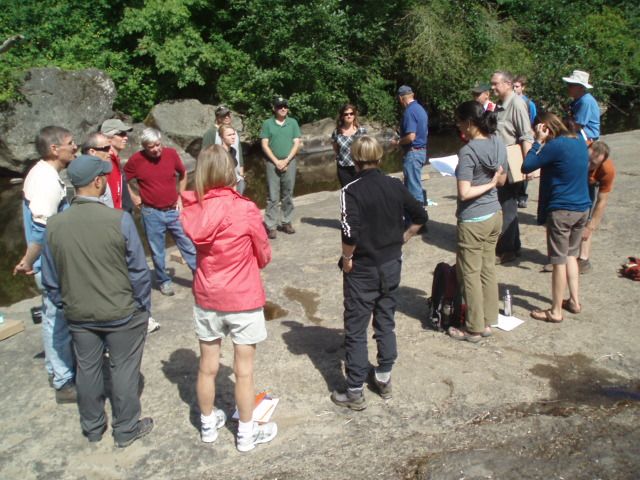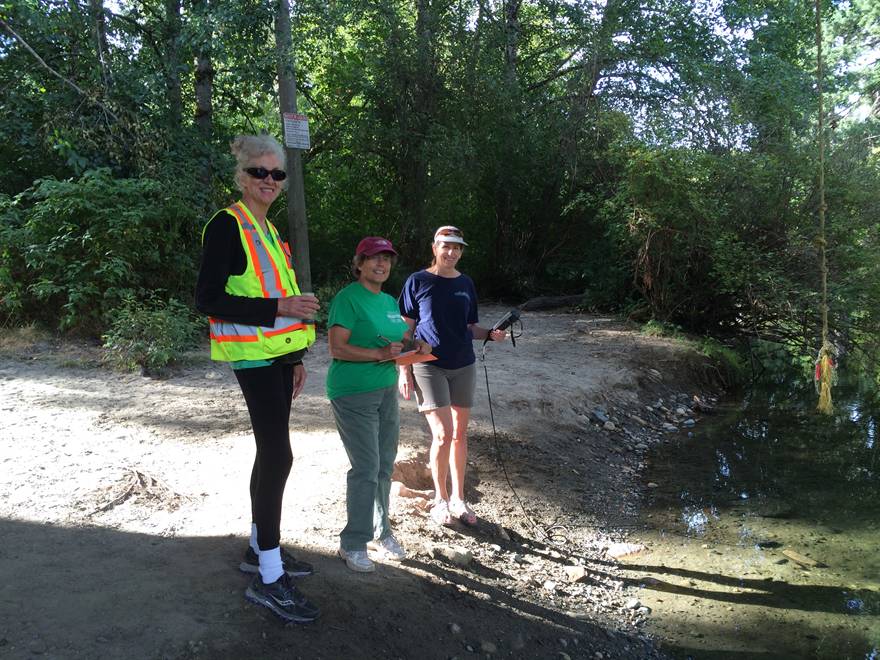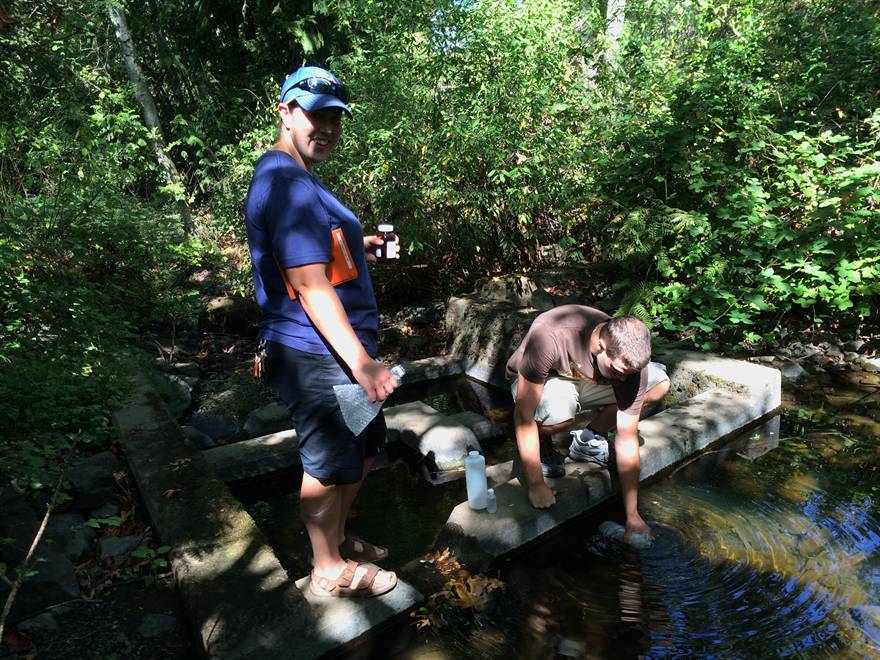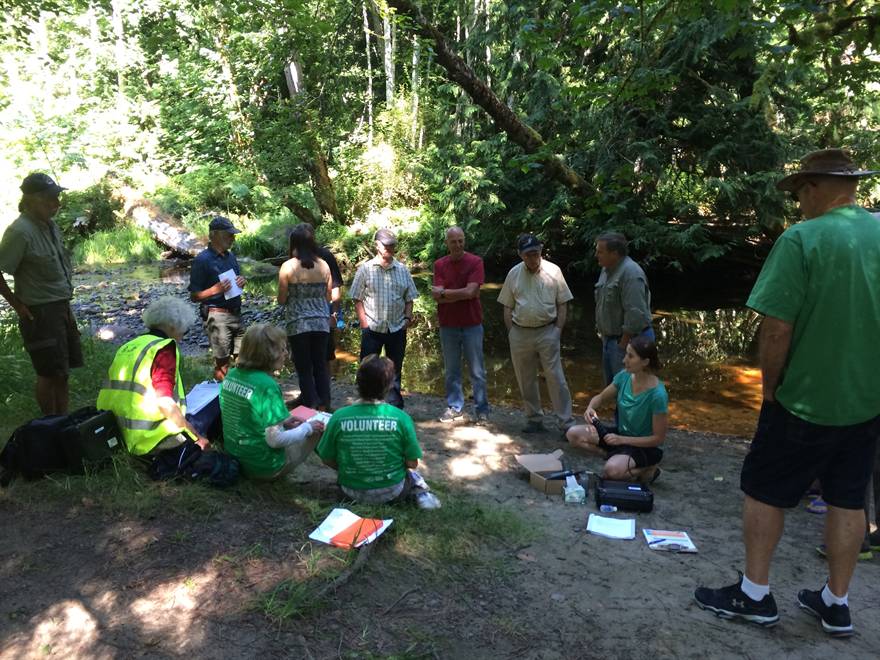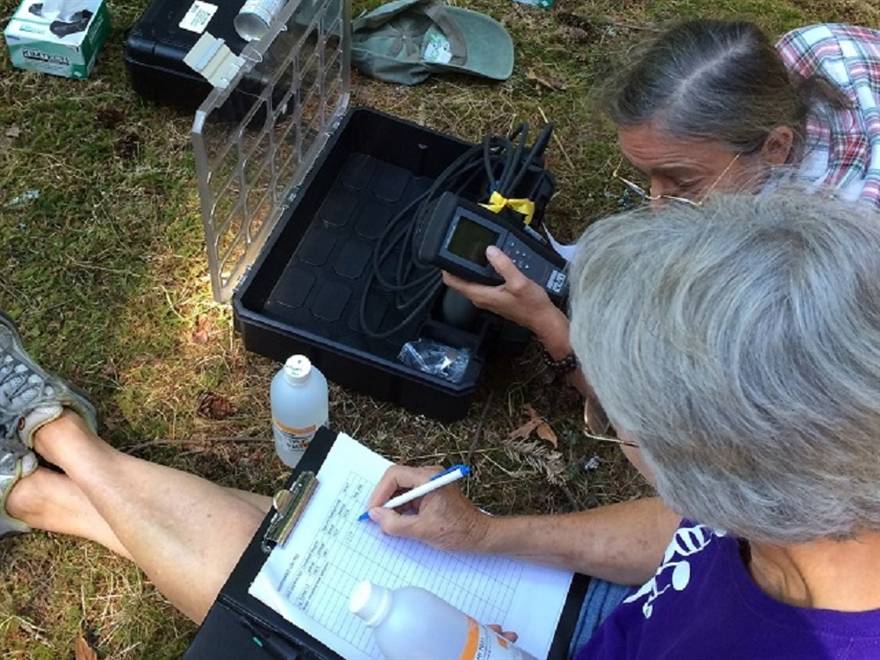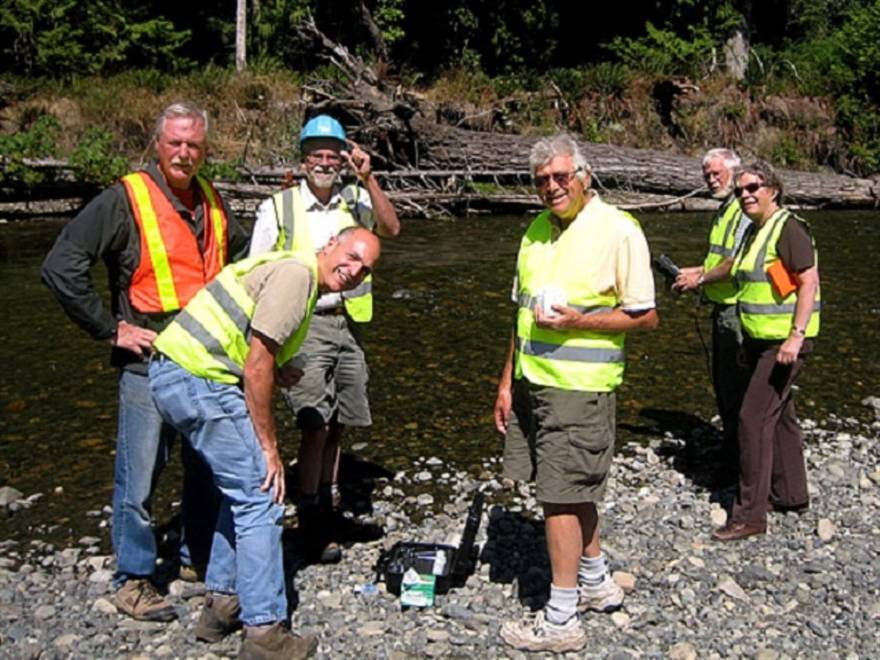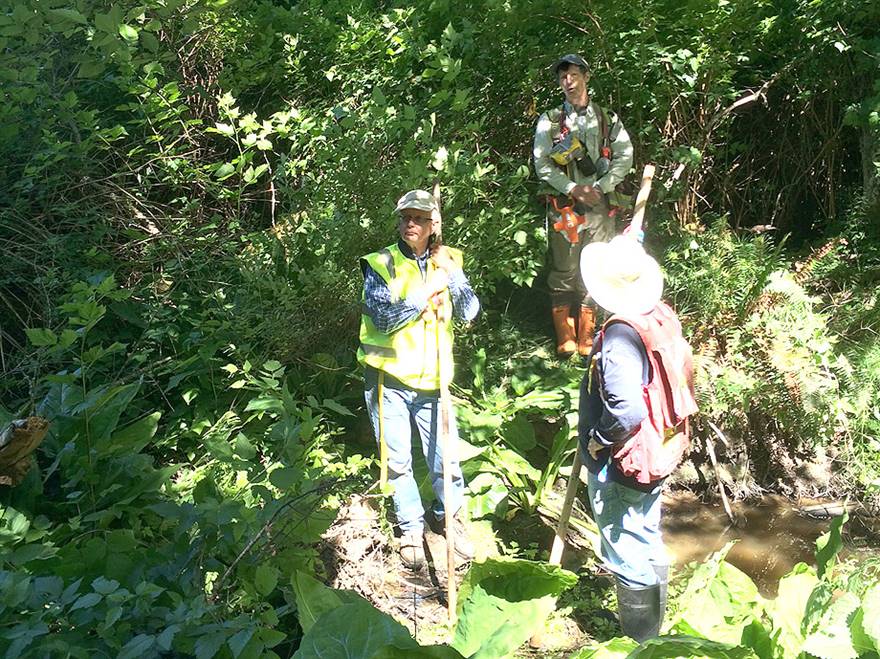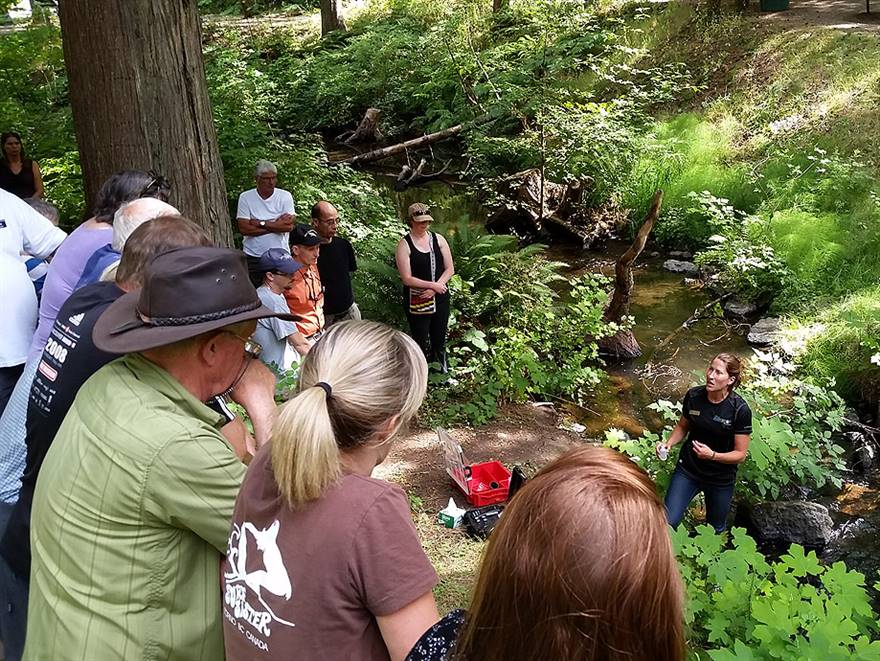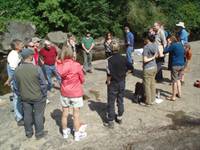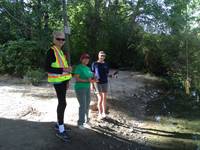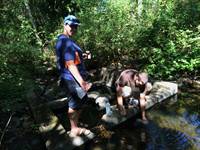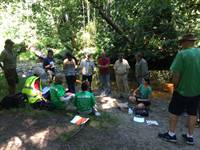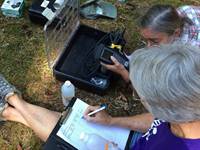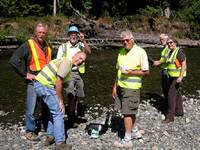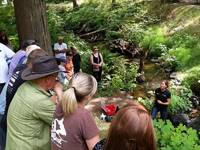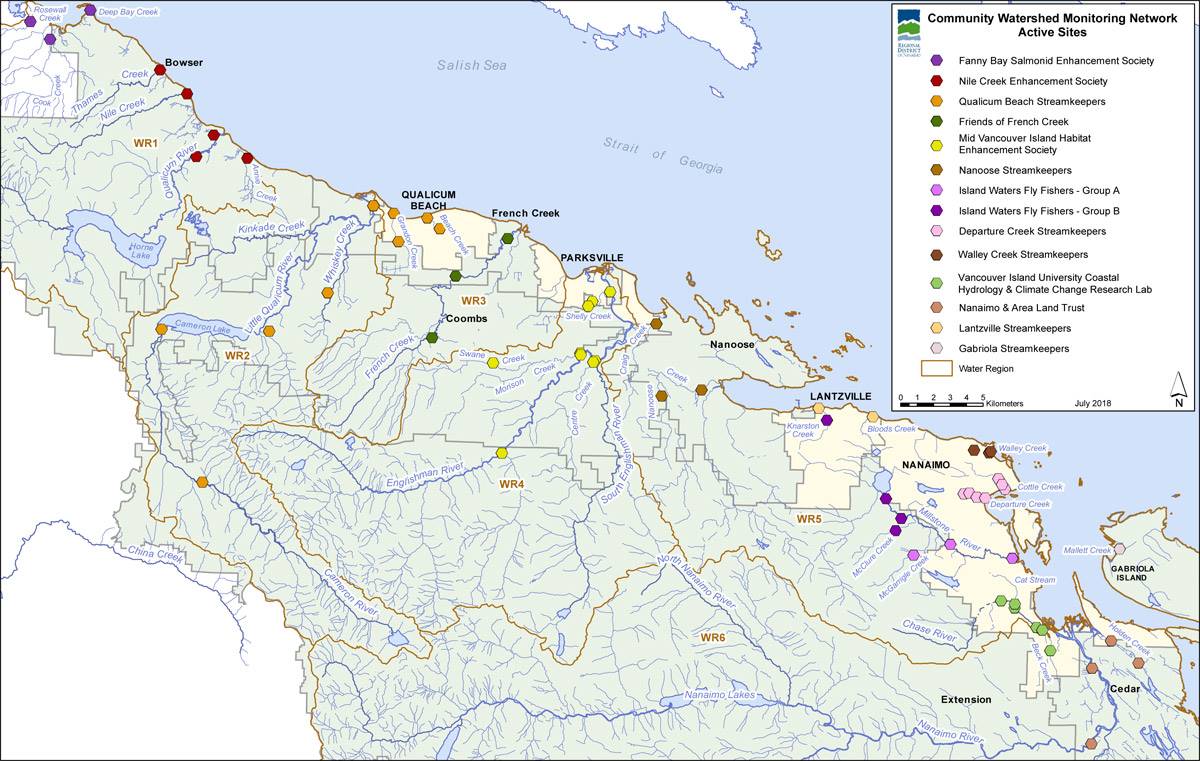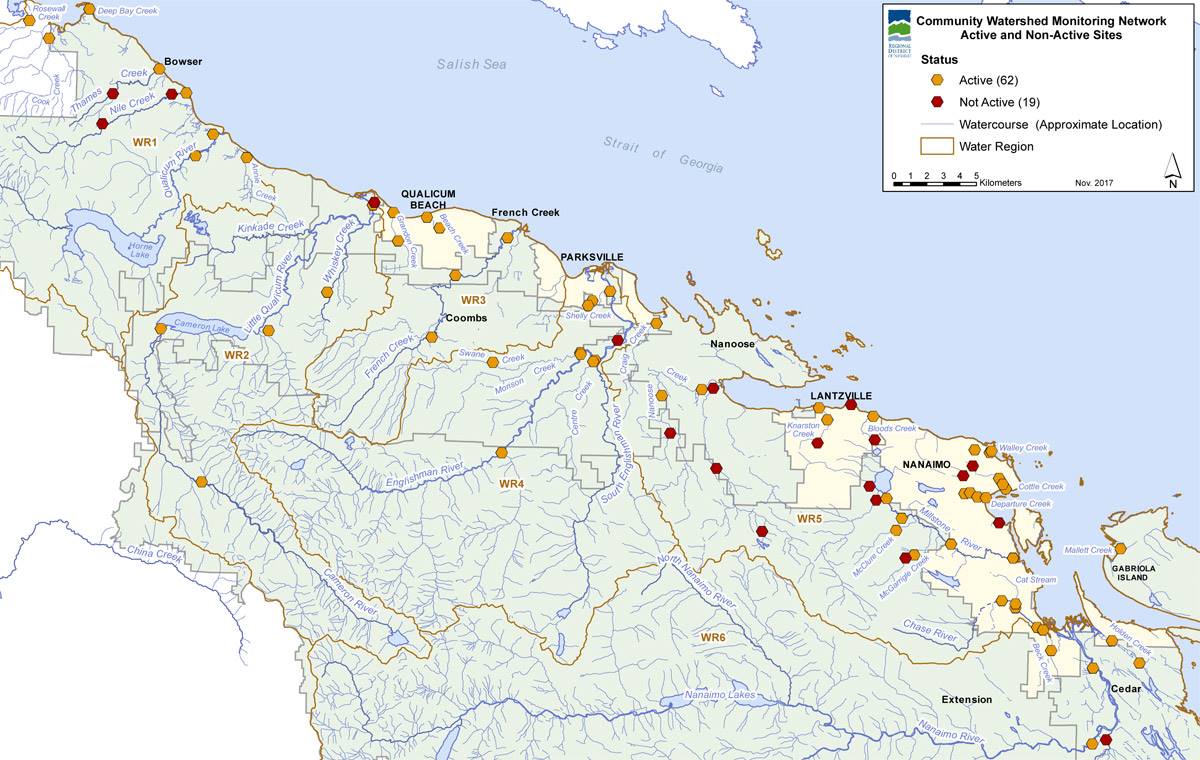Building & Bylaw ServicesCorporate Services Current PlanningDrinking Water & Watershed ProtectionEconomic DevelopmentEmergency ServicesEnergy & SustainabilityGIS/MappingLong Range PlanningParksRecreationRegional TransitSolid Waste and RecyclingWastewater ServicesWater & Utility ServicesServices by Others
Community Watershed Monitoring
What is the Community Watershed Monitoring Network?
It's a partnership between the RDN's Drinking Water and Watershed Protection (DWWP) program, the Ministry of the Environment (MoE), Island Timberlands LP, and many amazing community watershed stewardship groups in our region. The RDN provides the equipment and works with the MoE to complete annual training and data analysis. The MoE contributes expertise in water quality testing, deciphering gathered data and guidance in program direction. Island Timberlands sponsors the lab analysis costs for Quality Assurance and Quality Control, loans volunteers' safety gear and provides access to the upper watersheds. Dedicated community groups donate their time, attending annual training sessions, calibrating equipment and getting out on their local streams to collect water quality data.
Results Session March 27th 1:30 - 3:30pm
Parksville Community Conference Centre
Parksville Community Conference Centre
Surface Water Quality Trend Analysis Report
CWMN Data from 2011 - 2017

< Back
Next >
Why?
Expands on the provincial data base, collecting enough data to see watershed trends and raise watershed health awareness in local communities. The long term objective is to use multiple years of data to determine which watersheds require more detailed monitoring and/or improved watershed management, and to assist in land use planning. Data is collected for turbidity, dissolved oxygen, temperature and conductivity for 62 sites in 22 watersheds across our Region. Additional lab analysis is being completed to further investigate what potential contaminants are associated with turbidity exceedances observed in the first three years of data collection. In 2014 eleven sites in northern RDN waterways were sampled for E.coli and Phosphorus and in 2015 eleven sites in southern RDN waterways were sampled for E.coli, Phosphorous and metals.When?
Monitoring occurs once a week for 5 weeks in the summer low flow period (August - September) and once a week for 5 weeks in the fall flush period (October - November).
Who?
Environmental stewardship organizations and streamkeepers currently involved are:
| Stewardship Organizations | Maps |
|---|---|
| |
Where?
Streams currently monitored include:- Rosewall Creek
- Deep Bay Creek
- Thames Creek
- Nile Creek
- Big Qualicum River
- Annie Creek
- Upper Cameron River
- Cameron River
- Little Qualicum River
- Whiskey Creek
- Grandon Creek
- Beach Creek
- French Creek
- Morison Creek
- Swane Creek
- Shelly Creek
- Upper Englishman River
- Englishman River
- Centre Creek
- South Englishman River
- Craig Creek
- Nanoose Creek
- Knarston Creek
- Bloods Creek
- Walley Creek
- McClure Creek
- Millstone River
- McGarrigle Creek
- Departure Creek
- Cottle Creek
- Chase River
- Beck Creek
- Cat Stream
- Holden Creek
- Nanaimo River
- Mallett Creek
After three years of sampling, each site's results are reviewed and testing at sites with consistently good water quality is suspended for three to five years. This allows resources to be used to expand the network, adding sampling at new sites where needed.
Results?
- 2017 Data Summary - Powerpoint Presentation *New*
- 2016 Data Summary - Powerpoint Presentation
- 2015 Lab Analysis Report - IWFF DCS VIU
- 2012 -2015 Water Quality Trend Report - Nanoose Streamkeepers
- 2015 Data Summary - Powerpoint Presentation
- 2012-2014 Water Quality Trend Report
- 2014 Data Summary Report
- 2011-2013 Water Quality Trend Report
- 2013 Data Summary Report
- 2012 Data Summary Report
- 2011 Data Summary Report
Resources?
- DWWP reports database
- RDN Water Map
- British Columbia Approved Water Quality Guidelines Summary Report
- MoE Water Quality Guidelines
- MoE Water Quality Objectives West Coast Region
- MoE Water Quality Environmental Protection Division
- MoE Water Stewardship Division

